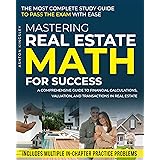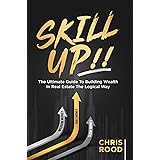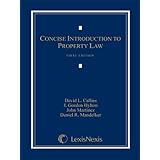The journey to building a significant real estate portfolio often appears daunting, especially when conventional wisdom suggests a substantial capital outlay is necessary. However, as highlighted in the compelling video above, entrepreneurs Cody Davis and Christian Osgood defied these expectations, amassing a $25 million real estate portfolio by age 23. Their narrative is not merely an inspiring tale of youthful success; it serves as a masterclass in applying advanced creative real estate investing strategies, particularly seller financing and strategic no money down real estate approaches.
This article delves deeper into the principles and practical applications that underpinned Cody and Christian’s rapid ascent in the multi-family and commercial real estate sectors. We will explore their core philosophies, dissect their acquisition methodologies, and analyze the meticulous operational strategies that enabled them to scale their real estate portfolio with remarkable efficiency and minimal personal capital. Understanding their journey provides invaluable insights for experienced investors seeking to replicate similar levels of portfolio scaling.
The Foundational Principle: Deal, Then Debt, Then Equity
A cornerstone of Cody and Christian’s strategy, and indeed a critical lesson for any serious investor, is the mantra: “Deal, then debt, then equity.” This sequence radically shifts the focus from scrambling for capital to identifying genuinely lucrative opportunities first.
Conventional thinking often compels investors to secure financing before finding a property, which can limit options or force acceptance of less favorable terms. However, by prioritizing the deal itself, an investor can structure the purchase in a way that dictates the necessary debt and equity, rather than the other way around. Cody’s initial acquisition of a 12-plex perfectly illustrates this principle; despite having only $3,000 to his name, he secured over $1 million in seller financing and leveraged a hard money lender for an additional $125,000 down payment at a 12% interest rate. This was a testament to the strength of the asset and a well-articulated exit strategy.
Mastering Seller Financing and Creative Capital Stacks
Seller financing emerges as a dominant theme in their acquisition strategy, proving instrumental in their no money down real estate endeavors. This method allows the seller to act as the bank, carrying a portion of the loan, thereby reducing the buyer’s upfront cash requirement.
A prime example of this intricate dance is the acquisition of the historic Robin Hood resort. Originally built in 1934, this property on the Hood Canal in Washington, comprising 18 cottages across 12 acres, was purchased for $4.5 million. While initially believed to be “zero down,” the actual transaction involved a $1 million down payment, with the seller carrying a significant $3.5 million note for eight years. This structure not only facilitated the purchase but also provided favorable long-term debt costs, projected at approximately $154,000 per year against an anticipated $400,000 net income. Moreover, they expanded their holdings by acquiring an additional 2.5-acre white house across the street, also leveraging seller financing for zero dollars out of pocket, showcasing their adeptness at assembling adjacent assets creatively.
Leveraging Private Capital and Equity Partners
Beyond direct seller financing, the duo skillfully integrates private capital and equity partners into their creative real estate investing framework. Christian emphasized that investors primarily care about three things: where their money is going, the stability of the backing asset, and how they get paid back.
By clearly mapping out these points, they were able to secure the $1 million down payment for the Robin Hood resort in a single meeting, even from individuals Christian had previously purchased duplexes from. This demonstrates the power of established relationships and presenting a compelling “deal first” opportunity. For other properties, like the Robin Hood Lodge (a former $900,000 listing), they brought in an equity partner with a buy-out agreement, ensuring a zero dollars out of pocket acquisition while still maintaining strategic control.
Scaling Your Portfolio: Beyond the First Deal
The transition from a few units to a portfolio of 170-180 properties requires a deliberate scaling strategy. Cody and Christian assert that risk does not necessarily scale proportionately with larger unit counts; in many cases, a 20-unit building can be less risky than a duplex.
This is because larger multi-family properties often generate significantly more diversified income, making them more resilient to individual tenant vacancies or capital expenditures. The challenge, however, shifts from acquiring capital to managing the operational complexities that come with increased scale. Christian, for instance, expanded from two duplexes and a W2 job to 55 units relatively quickly, confronting the steep learning curve of advanced accounting and property management.
Strategic Property Management for Exponential Growth
Effective property management becomes paramount when building a substantial multi-family portfolio. Recognizing this, Cody and Christian initially started their own property management company, which Christian eventually acquired in exchange for a building. This allowed them to control costs and maintain high operational standards.
Typical third-party property management fees range from 8-10% of rents. However, by managing their own portfolio, Christian brings costs down to $50-60 per month per unit. For third-party clients, his company charges $75-85 per unit, with flat fees of $500 for leasing and $200 for renewals. Their strategy emphasizes focusing on “individual hubs” or concentrated geographic areas. This prevents the “sloppy bookkeeping” and disrepair that often plagues investors who spread their acquisitions too thinly across disparate markets, making efficient oversight nearly impossible.
The Long Game: Holding, Not Over-Leveraging
A crucial philosophical difference distinguishing their approach from many speculative investors is their stance on wealth creation through real estate. Cody argues that “the real money comes from holding real estate and not over-leveraging it.”
While some investors, like Ben Mallah, advocate for refinancing to pull out cash, Cody and Christian prioritize keeping cash in the deal to increase long-term cash flow and ultimately pay off debt. They highlight that individuals who “leverage forever are always at risk,” whereas those who strategically pay off their assets, whether it’s $1 million or $100 million worth of commercial real estate, minimize obligations and build sustainable financial independence. Their personal decision to pay themselves only $60,000 each per year, reinvesting the vast majority of their income back into the growth and acquisition of new assets, underscores this commitment to delayed gratification and long-term stability.
Underwriting and Navigating Market Realities
Even seasoned investors like Cody and Christian encounter challenges, especially with unique properties. When underwriting the Robin Hood resort, they admit to making mistakes in projecting operating expenses, initially targeting a $400,000 net to cover their $154,000 annual debt service.
They learned that understanding the seasonality of income is critical, as the resort generates around $100,000 per month during the summer but only a third of that in winter. This type of detailed underwriting, including a thorough examination of local market dynamics and potential for additional income streams (like the two long-term rentals at the Robin Hood Lodge bringing in $1,450 each per month), is indispensable for robust cash flow analysis. To counteract negative cash flow in some markets, Cody suggests lowering the cost of capital—either by reducing the purchase price, increasing the down payment, or most effectively, by negotiating a lower interest rate through seller financing.
Overcoming Challenges and Building Resilience
The entrepreneurial journey is fraught with obstacles, and real estate investing is no exception. Christian candidly shares that the initial capital was “the easiest part,” with the real challenge being the operational demands of rapidly scaling from a few duplexes to 55 units. Learning complex accounting, for instance, proved to be a significant hurdle. However, their pragmatic approach dictates that you “start every venture with profitability,” so if you lack the cash flow for external bookkeeping, you handle it yourself until the business can support the expense.
Cody aptly summarizes the nature of the industry: “Real estate is a very simple model. People own stuff, they rent it out to people. It is not a complicated game; it is just hard.” This distinction is crucial; while the mechanics are straightforward, the discipline, negotiation, and resilience required to execute consistently are demanding. Their advice to “be very kind but firm” in dealings, and to prioritize finding the deal before obsessing over capital, serves as a practical guide for navigating the inherent difficulties.
The Power of Partnerships and Mentorship
The synergy between Cody and Christian is a powerful testament to the value of strategic partnerships. Their combined skills—Cody’s aggressive acquisition tactics and Christian’s systemic, analytical approach—created a formidable force. They set ambitious goals, such as acquiring 100 rental apartments within 11 months to achieve financial independence for their families, and successfully hit those targets. Christian’s wife, initially a kindergarten teacher, now manages their property management company, highlighting how real estate can transform lives and family dynamics.
Furthermore, mentorship plays a vital role. Cody’s reliance on experienced mentors from his time as a real estate agent helped him navigate his first “no money down” deal. Their desire to meet with figures like Mike Kluge, a major Grant County real estate holder, and Mark Cuban, a business titan, underscores a continuous hunger for knowledge and a commitment to learning from those who have built significant multi-family portfolio empires. As Cody notes, “You meet up with the owners that own the rest of the multi-families. Go meet with the players. They can teach you how to play the game and they can give you the opportunities that you’re looking for.”









